First fabric skin tests (19.9.2011) (2012)
I lasercut some wood parts to build a very super rough mock-up. The mock-up is nice because it gives me a much better feeling for the size, dimensions and architecture of the joint. But on the other hand it is also rather fragile and doesn’t give me a good impression of the strength and stability of the actual joint.
To get a feeling for how the fabric skin will move with the joint i made two fabric sleeves, one from a slightly stretchy jersey fabric and the other from 1.5 mm thick neoprene.
The jersey prototype moves quite nicely with the arm, especially when stretched at both ends, to avoid it bunching at the joint. But i am afraid of how the fabric will wear out over time. Maybe a thicker lycra fabric with good elasticity and shape retention (better word?) would be worth considering.
Arm with semi-stretchy jersey sleeve.
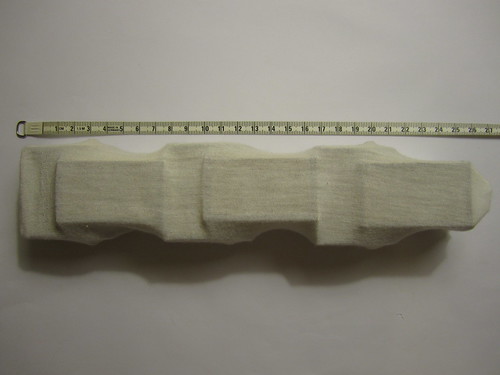
Twist and bend.
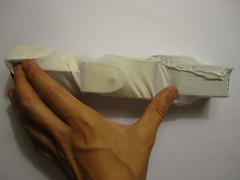

Video of jersey skin coated arm in motion
The 1.5 mm neoprene that i have at hand is too thick to deform properly with the amount of bend that these joints can handle. Although, maybe i am underestimating the strength of the joints, as my mock-up is rather flimsy.
Sewing the neoprene onto the joint.
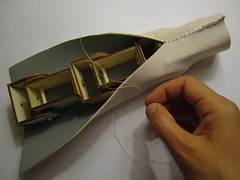
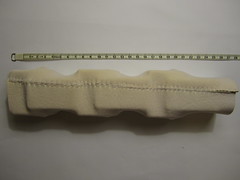
Bend
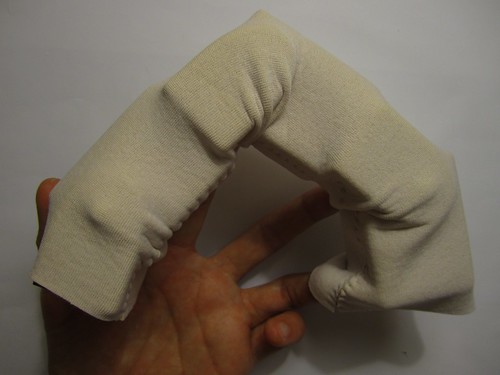
Video
One question i now have is, how much to attach the fabric to the joint and where to attach it, to what parts? This will also depend on the kind of fabric we end up using, and how much it stretches with vs. slides over the joint. Stretching it from both ends, seems like a nice way of keeping if from bunching, and in combination with fixing it at a few select points, might be a nice way to control how and how much it moves. The fabric should stretch with the joint, but not get caught on it (like it does on the inside the inner crevice of the elbow). What is missing is the flesh! A buffer that ties the skin to the bones without the skin being attached directly to the bones.
I’m excited for the 0.5 mm thick neoprene to arrive, because i wonder how stretchy and how tough it is, and maybe we should add some additional material, something with the consistency of flesh.

